Organic colourants
Artists' Materials
The variety of hues obtained with organic dyes is remarkable: yellow, red, purple, tan, as well as light and dark pink. This is related both to the use of different dyestuffs – probably lichen-derived for purple and insect-based for red and pinks – and to different preparation methods, such as the amount of alum or potash added to the dye. The intense purple hue, in particular, seems to have been obtained by layering the purple dye over a base of lead white. Lead white was also found mixed with the dye in the light pink and tan areas. Dark pink areas contain gypsum instead.
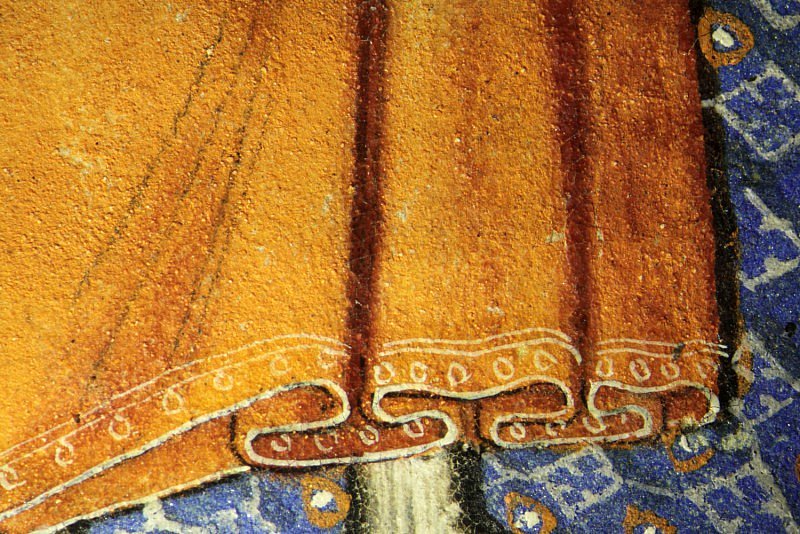
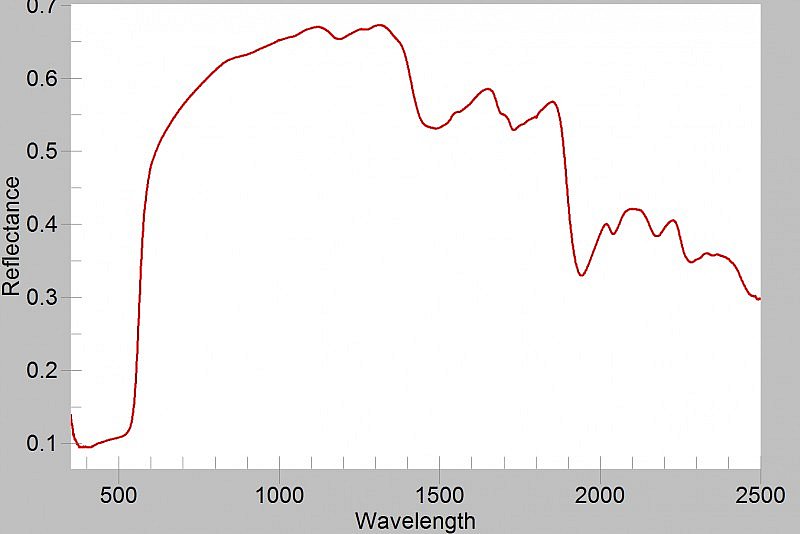
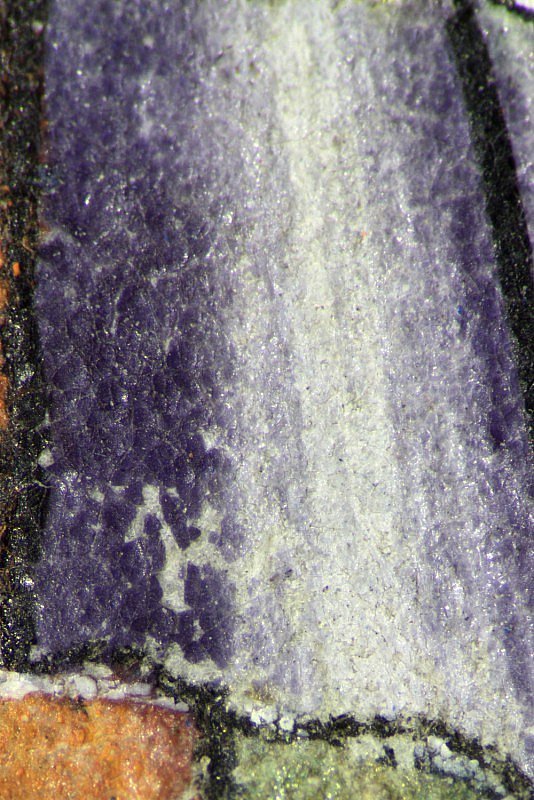
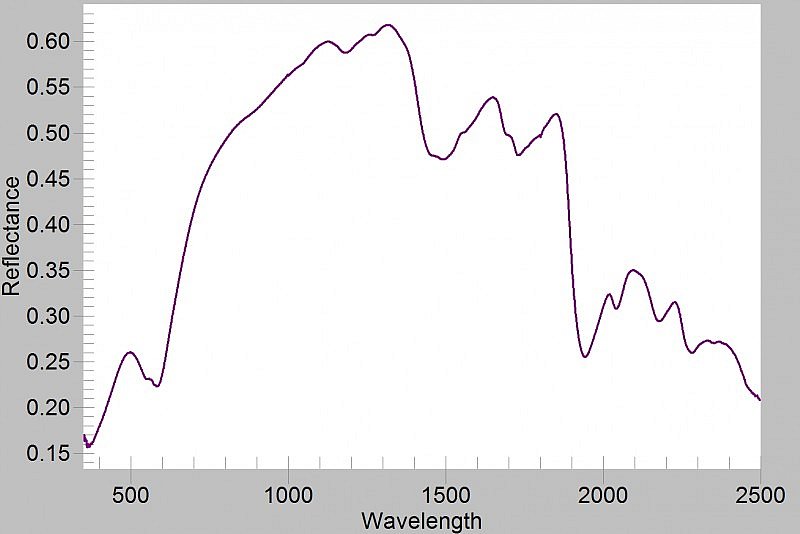
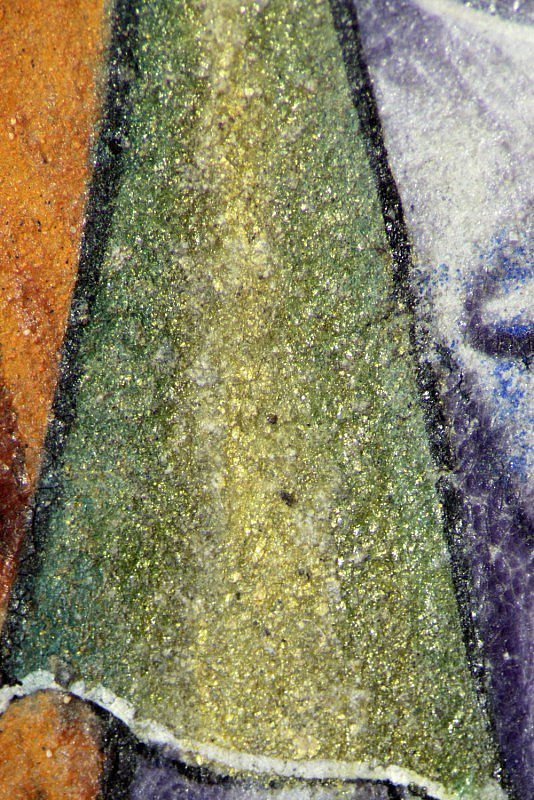
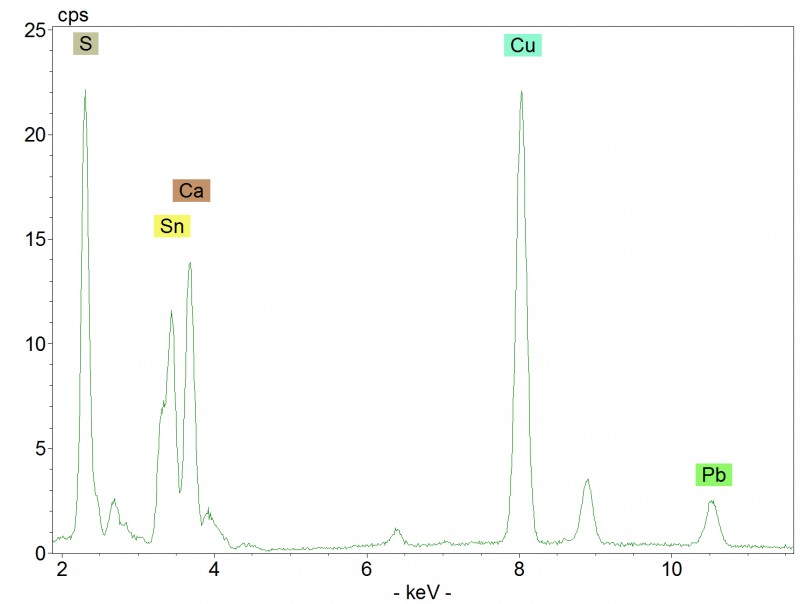
Prefatory image
St Andrew, the first apostle to follow Christ, was venerated throughout Christendom. He is shown holding a small book and a saltire cross, the symbol of his martyrdom. His pose is similar to that of St Edmund who is depicted on the previous page, but Andrew’s face is contorted with anguish and sorrow, unlike the serene countenance of St Edmund, the East Anglian king.
St Andrew’s plain orange tunic is painted with red lead, and simple decorations at the hem contain lead white. Thick underdrawing lines are visible through the paint layer in some areas (hotspot 1). The saint’s purple mantle, however, conveys a more three-dimensional effect, obtained with a gradation of colour. The hue, which was favoured by English artists of the first half of the 14th century, was obtained from an organic dye, likely extracted from a lichen, such as orchil (hotspot 2). The inner folds of the mantle are skilfully modelled with alternating stripes of mosaic gold and verdigris (hotspot 3), in a pattern which appears in contemporary English and French manuscripts.